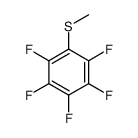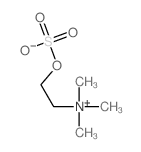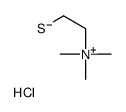999-81-5
| Name | chlormequat chloride |
|---|---|
| Synonyms |
EINECS 213-666-4
CCC700 Ethanaminium, 2-chloro-N,N,N-trimethyl-, chloride (1:1) MFCD00011869 2-Chloro-N,N,N-trimethylethanaminium chloride Lihocin CEKU-CCC Ethanaminium, 2-chloro-N,N,N-trimethyl-, chloride Retacel Chlormequat chloride Chlorocholine Chloride CECECE CYCOGAN (2-Chloroethyl)trimethylammonium chloride Choline dichloride CYOCEL (2-Chloroethyl)-trimethylammonium chloride TUR Extra 2-chloro-N,N,N-trimethylethan-1-aminium chloride 2-chloro-N,N,N-trimethylethanaminium chloride (1:1) G2K1&1&1 &&Chloride chloromequat chloride β-Chloroethyltrimethylammonium chloride Trimethyl-β-chloroethylammonium chloride CYCOCEL |
| Description | Chlorocholine chloride is an effective plant growth regulator. Chlorocholine chloride can inhibit gibberellin (GA) biosynthesis. Chlorocholine chloride can be used for the research of the mechanisms and effects of GA on plant cell growth and differentiation[1][2]. |
|---|---|
| Related Catalog | |
| In Vivo | CCC(300 mg/L)increases the biomass of leaves and stems, substantially enhances the sucrose contents in leaves and decreases gibberellic acid (GA) but increases indole-3-acetic acid (IAA) contents in lily bulbs[2]. |
| Melting Point | 239-243 °C (dec.)(lit.) |
|---|---|
| Molecular Formula | C5H13Cl2N |
| Molecular Weight | 158.069 |
| Exact Mass | 157.042511 |
| Stability | Stable. Combustible. Incompatible with strong oxidizing agents. Corrodes many metals. Very hygroscopic. |
CHEMICAL IDENTIFICATION
HEALTH HAZARD DATAACUTE TOXICITY DATA
MUTATION DATA
|
| Symbol |

GHS07 |
|---|---|
| Signal Word | Warning |
| Hazard Statements | H302-H312 |
| Precautionary Statements | P280 |
| Personal Protective Equipment | dust mask type N95 (US);Eyeshields;Faceshields;Gloves |
| Hazard Codes | Xn:Harmful; |
| Risk Phrases | R21/22 |
| Safety Phrases | S36/37 |
| RIDADR | UN 2811 6.1/PG 3 |
| WGK Germany | 2 |
| RTECS | BP5250000 |
| Packaging Group | III |
| Hazard Class | 6.1 |
| HS Code | 2923900011 |
|
~78% 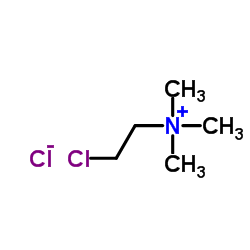
999-81-5 |
| Literature: Sebestik, Jaroslav; Marques, Sergio M.; Fale, Pedro L.; Santos, Susana; Arduino, Daniela M.; Cardoso, Sandra M.; Oliveira, Catarina R.; Serralheiro, M. Luisa M.; Santos, M. Amelia Journal of Enzyme Inhibition and Medicinal Chemistry, 2011 , vol. 26, # 4 p. 485 - 497 |
|
~% 
999-81-5 |
| Literature: J. Gen. Chem. USSR (Engl. Transl.), , vol. 59, # 6 p. 1401 - 1406,1243 - 1248 |
|
~% 
999-81-5 |
| Literature: Justus Liebigs Annalen der Chemie, , vol. 337, p. 56 |
|
~% 
999-81-5 |
| Literature: Chemische Berichte, , vol. 71, p. 1651 Chem.Abstr., , p. 5078 |
|
~% 
999-81-5 |
| Literature: Chemische Berichte, , vol. 43, p. 2741 |
| Precursor 6 | |
|---|---|
| DownStream 7 | |
| HS Code | 2923900011 |
|---|---|
| Summary | 2923900011 2-chloro-n,n,n-trimethylethanaminium chloride。supervision conditions:s(import or export registration certificate for pesticides)。VAT:17.0%。tax rebate rate:9.0%。MFN tarrif:6.5%。general tariff:30.0% |

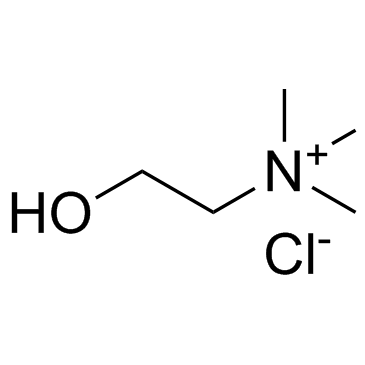


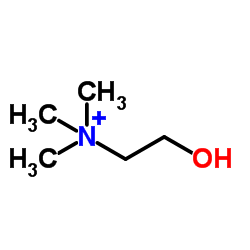

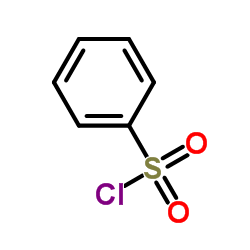
![1,2,3,4,6,7,8,9-Octachlorodibenzo[b,d]furan structure](https://image.chemsrc.com/caspic/039/39001-02-0.png)


